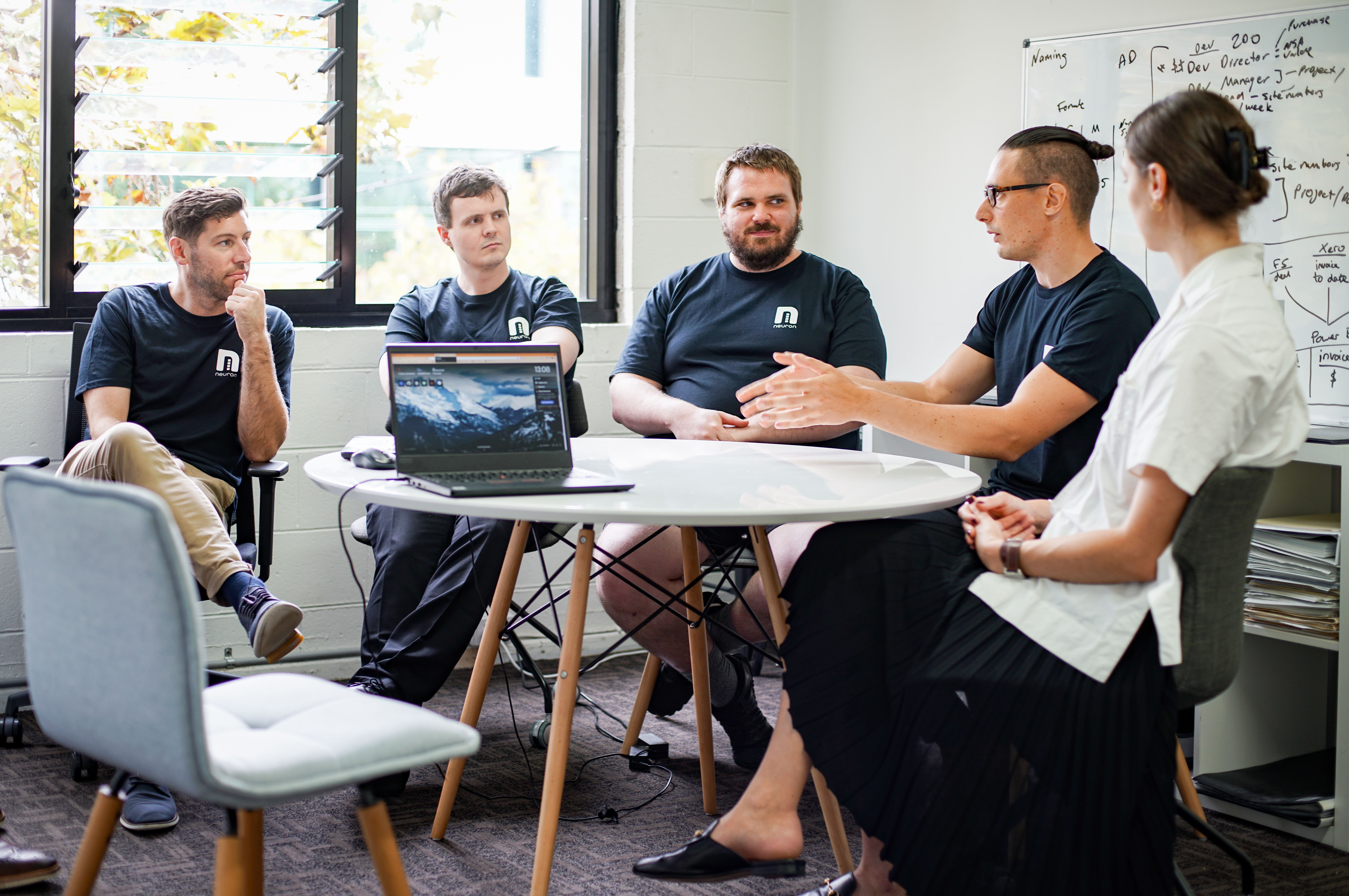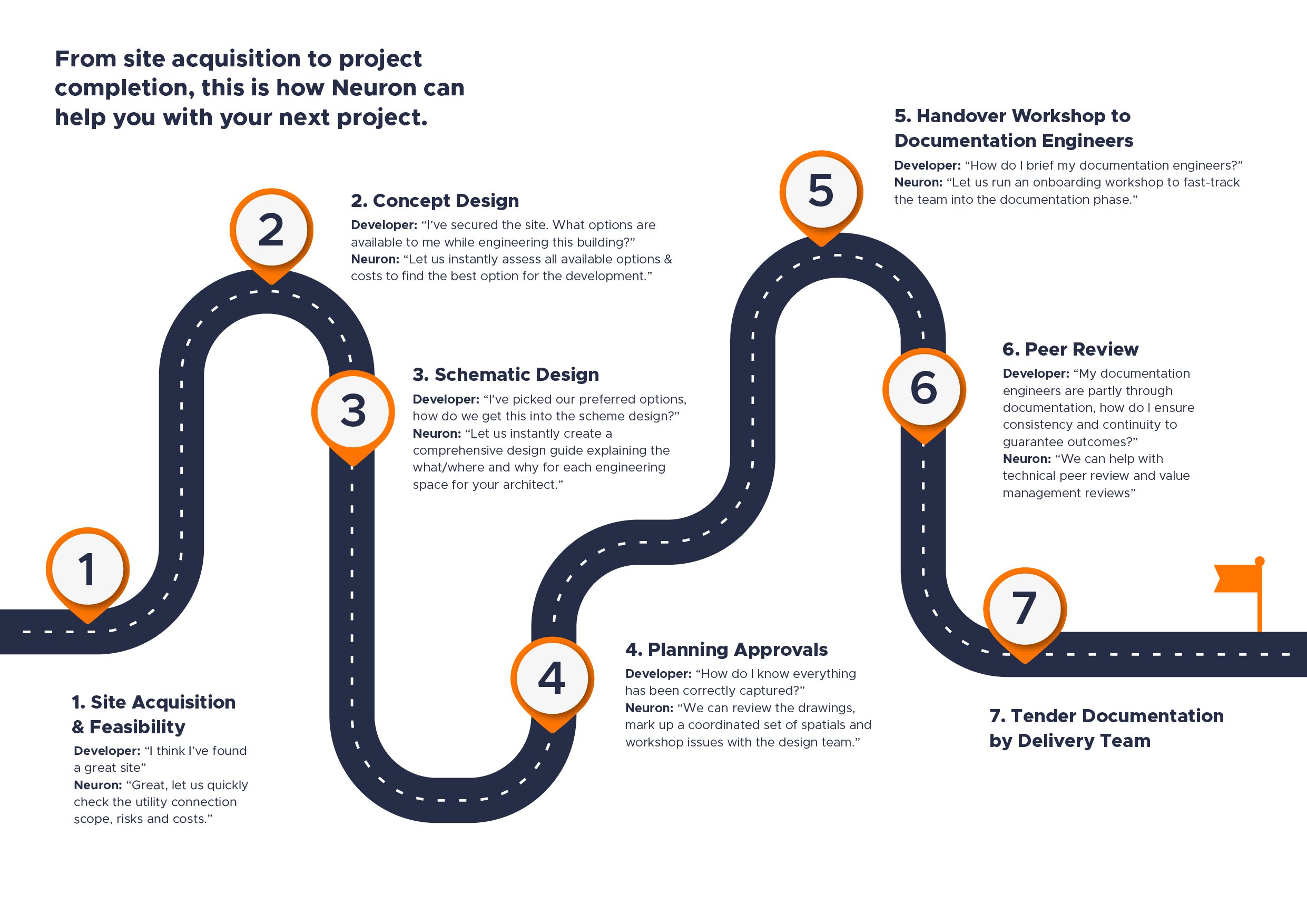Neuron Case Study | South Yarra House
August 9, 2023Neuron Case Study: 204 + 205 Fitzwilliam Street, Parramatta
September 22, 2023Neuron Case Study | South Yarra House
August 9, 2023Neuron Case Study: 204 + 205 Fitzwilliam Street, Parramatta
September 22, 2023
Merging data with experience:
The value of independent peer reviews
Peer reviews are pivotal to the success of a project. Planning delays and cost overruns in the current market have eroded margins to a point where even small mistakes can determine whether a project succeeds or fails. Beyond mere compliance, robust risk management strategies that include independent peer reviews can mean the difference between a successful or unviable project.
This article delves into the most frequent mistakes and overlooked opportunities that we encounter in our independent peer reviews across the country. Using real-life case studies, we outline successful strategies for adding value and enhanced feasibility outcomes to a building.
Losing quality and cost control
When developers enter into a design and construct contract, they often struggle to decide whether to retain or novate their building services consultants to the builder. While novation has its benefits, like design continuity, it could also limit the client's involvement in design management and compromise the project scope and objectives, since their consultants will now work for the builder and not the original client, who may have different objectives as the project progresses. Neuron can join your design team at any point in the project, so it's never too late to benefit from our expertise and engineering data.
Regardless of the choice the client makes, Neuron can help mitigate this risk through our peer review service. We remain "client-side" and review design documentation on behalf of the client throughout the project lifecycle. Our service encourages innovation, maximises design efficiencies, and ultimately maintains the project brief and the client's brand reputation.
Case study 1
Value uplift
Same amount of car spaces
Neuron conducted a value management review for a project in Sydney's CBD, focused on its structure and services. By assessing the value of each square of potential sellable area and comparing it to spatial area data and construction cost data, we identified a value uplift of approximately $6 million.
This was achieved while reducing 1.5 basement levels and maintaining the same number of car parking spaces. We reviewed all structural and services costs and spatial data against proposed architectural layouts, testing various scenarios against actual plans to establish a value management opportunities register.
Our proposed strategies included shifting equipment to areas with lower sellable areas, redesigning the building core structurally and services risers to unlock more potential sellable areas, and redesigning the car park to fit more car spaces into upper levels, eliminating the need for extra levels of underground parking.

Extracting more value from your project
Our approach to creating value extends beyond cost-cutting. In order to maximise the value of a development, developers have three tools at their disposal: the cost of the land, the cost of construction, and the profit gained from selling or renting the property. Our comprehensive approach empowers design teams to optimise the project's potential while remaining true to the client's vision.
This means that construction cost is just one piece of the puzzle when it comes to making a project financially viable. By prioritising elements that add value to a development, we can allocate resources towards generating higher revenue. For instance, we may increase the amount of saleable space, reduce construction costs, or enhance the amenities of a building to command higher sales or rental prices.
Case study 2
Value uplift
Same NLA
Recently, we conducted a peer review on a residential and mixed-use high-rise tower in the Sydney CBD. We were able to identify opportunities to optimise the design by refining the client brief and redesigning several of the services and structural solutions. We take a comprehensive approach to ensure that our design team can optimise a project's potential while staying true to the client's vision.
Our review allowed us to uplift circa $10 million from the development by rationalising the tower height and the number of basement levels, without compromising the Gross Floor Area, Net Leasable Area, and parking numbers. This holistic review involved the structure and services engineers working together over a five-day design sprint.
We use tech-backed collaboration tools to facilitate efficient reviews without the need for extensive email correspondence. This structured review process helps end clients define outcomes and finalise agreed-upon directions. The design team then continued with their design process.

Merging data with experience:
Our unique approach
We do more than just check for compliance in our peer reviews. We carefully analyse the design and the client's brief, critically examine the project's objectives and assumptions, and use data for comparison purposes to identify any potential blind spots or overlooked opportunities.
To conduct these reviews, we use Neuron, an engineering data software that allows us to quickly develop innovative design solutions and provide a detailed, holistic review of the project. This software streamlines our assessment of the value of each engineering discipline and guarantees a thorough gap analysis.
Our structured QA process for engineering elements enables us to comprehensively review designs, compare disciplines, and create innovative solutions that enhance the overall project. Neuron contains everything necessary to ensure a successful project outcome, from lifts to substations, air conditioning condensers to hot water equipment, structural cores, columns, shoring systems, piles, and everything in between.
Case study 3
From Studios to 1 Bed 1 Bath
Value uplift
During a recent review of a Built-to-Rent (BtR) project in Victoria, we used an advanced Neuron structure and spatial data analysis to identify an opportunity to improve the building's design. We were able to convert a studio apartment into a one-bed, one-bath apartment on each of the 39 levels, resulting in an estimated $16 million increase in value for the client based on the value of each square meter.
While technical peer reviews can be helpful, they may not uncover the full potential value. Our unbiased peer review at Neuron takes into account several factors, including compliance, spatial, functional, and sustainable considerations, to ensure the best results for our clients.

Conclusion
Peer reviews conducted independently play a crucial role in ensuring successful project outcomes and maximising project value. In just three case studies mentioned in this article, Neuron identified structural and service configuration opportunities that would have otherwise been overlooked, resulting in an added value of over $32 million. This is the driving force, the why, behind our work at Neuron.
At Neuron, we offer independent peer reviews that challenge design assumptions, promote thorough evaluations, and identify valuable opportunities that contribute to the success of a project, all while ensuring the collaboration between the design team and the existing consultants is positive and collaborative in nature..
Get in touch at info@neuron.build to discuss your project’s needs.



